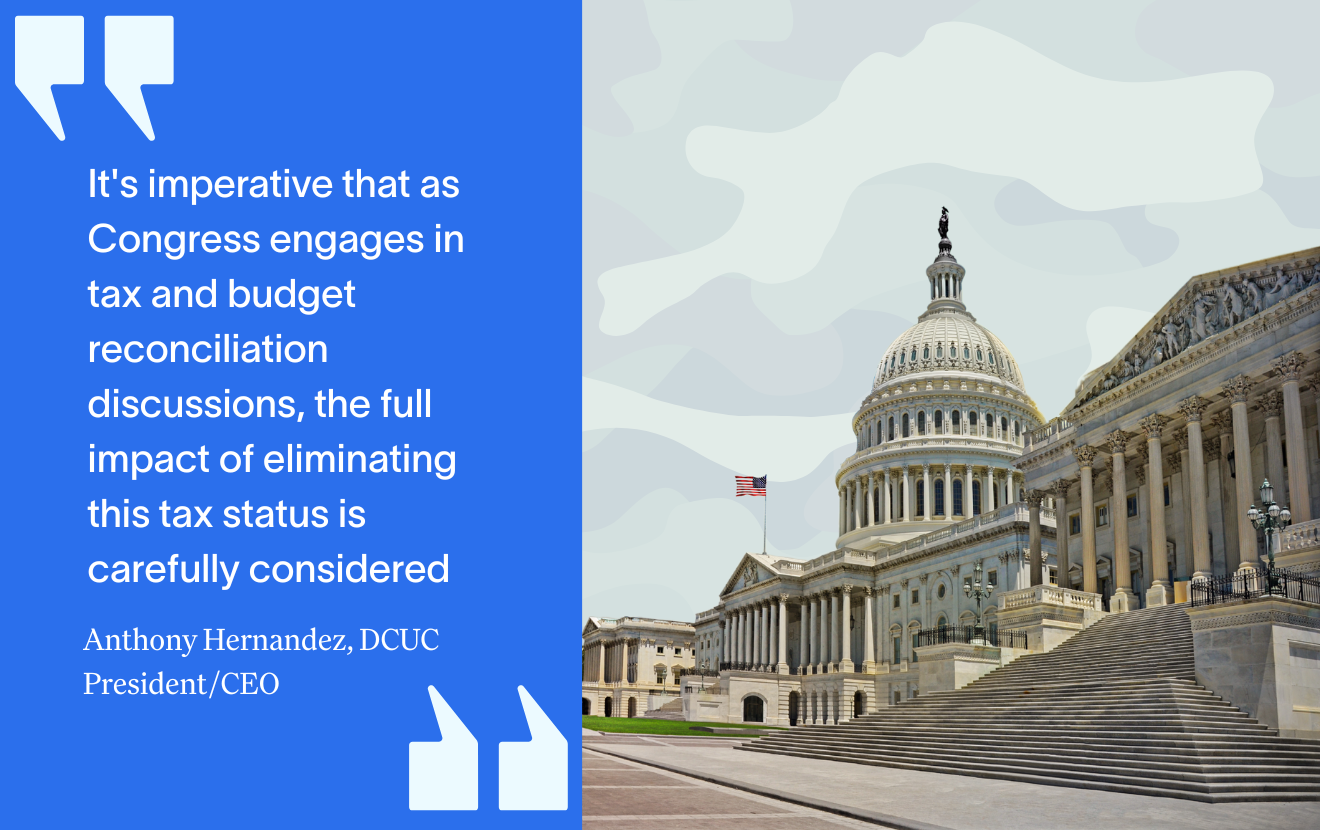With the financial pitfalls of the Great Recession behind us, and security breaches becoming a common threat, members are more mindful of their personal finances than ever before. Because credit unions are a reliable and trusted source, they have the unique opportunity to educate their members about financial literacy. For expertise on where credit unions should focus this National Financial Literacy Month, we turn to our Preferred Partners:
Sundeep Kapur, Digital Strategist, Allied Solutions
“We have to guide our members.
Members have financial needs and credit unions need to do to three things—educate, be convenient, and provide. Our mission is to make a difference in the lives of those we serve; we support momentous life decisions including home, life, and auto.
It is not just about selling our members a vehicle and all the add-ons. It is about educating our members on the best way to purchase a vehicle. We need to look for ways to raise the financial awareness of our members, they will reciprocate the relationship.
Security breaches like Target experienced have opened the door to an immense opportunity. Our members are concerned about privacy, about identity, and about their financial security. We need to step it up and educate our members about how to circumvent fraud, and what to do if they have been affected.
2014, it is the year to become a mentor!”
Kevin Boyles, Director of Business Development, Retirement Products & Solutions Group, Ascensus
“The number of health savings accounts (HSA), and the dollars in them, has risen sharply over the last decade. With most key provisions of the Affordable Care Act now effective, HSAs stand poised to be discovered by a new segment of the population. The opportunity is open for financial organizations to bring in new accounts, customers, and non-interest revenue.
According to a 2013 study by Devenir, HSAs with check cards are swiped an average of eight times a year, with an average transaction amount of approximately $120. This is quantifiable revenue, along with any low-balance, account closing or transfer fees that your organization could impose. At best, HSAs can give you a competitive edge in acquiring and retaining customers. At worst, not offering HSAs could send loyal customers to a competitor—taking other lending business and accounts with them. With HSAs poised for even greater expansion, is your financial organization in the game or on the sidelines?”
Dave Frankil, President, Burns-Fazzi Brock
“One thing that credit unions should focus on during National Financial Literacy month is practicing what we preach when it comes to stressing the importance of retirement planning—specifically, focusing not only on your members but your executives.
What we say to our members about the importance of planning for retirement, also applies in spades to our own executive teams. In other words, we care about making sure our executives will have the funds needed to live comfortably later in life, we want to help them save for retirement, and they should take maximum advantage of employer programs.
There is an added emphasis, though—your executive teams are critical to success, and retirement plans that help recruit, retain and reward need to be a part of every credit union’s human capital strategy. Focus on their long-term financial health, and they will be around to help members focus on their own.”
Jeff Chesky, President and CEO, Insuritas
“Credit unions must help members understand the best strategies for shopping for insurance. Insurance shopping can be intimidating, confusing and frustrating. Credit unions must reinforce critical insurance shopping rules.
First, encourage members to shop their insurance every year. Insurance carriers change their pricing for insurance all the time. Since the price for insurance is different for every individual, insurance companies don’t advertise insurance rates like a credit union advertises a single auto loan rate, so they just say, ‘We can save you money!’ Although we can get tired of hearing GEICO’s ’15 minutes can save 15%’ the fact is the more often you shop, the more carriers you quote, the more likely you will save, and save big.
Second, a member’s credit score has an increasingly big impact on their insurance rate. Insurance carriers believe the way you manage your finances is a strong indicator of claims risk. So shop often and keep your credit score up.”
Maria Del Amo, Director of New Market Development, Cathedral Corporation
“We understand that you’re required to send account statements to all your members either in print or electronically. However, many credit unions presume that no one actually sits down and reads it anymore. Some people do and some don’t. It may be considered a generational factor or with so many online tools, people keep track of their financials real time.
However, in lieu of the various credit/debit card theft activities this past holiday season, your members are using this crucial document to identify fraudulent activities in their accounts. Even if it is for a few seconds, members are taking the time to review their accounts.
Now, consider the opportunities that this situation presents to your financial literacy efforts. Have you ever thought about adding educational content, exciting offers, or free credit card theft protection information within these documents? It doesn’t hurt. It only could compliment your financial literacy efforts and build your member relations with those that do business with you.”
Dan Green, Executive Vice President, Marketing, Mortgage Cadence, LLC
“Educating members on how best to finance a home is a perfect National Financial Literacy Month fit and a good mission fit for credit unions. While it is true borrowers are savvier thanks to the housing crisis, it is also true that the mortgage process has become much more complex due to regulatory changes, secondary market rules, and other factors. What better way to take advantage of heightened financial literacy awareness and to get your members and your credit union prepared for this year’s home buying season? The need is great. After all, today’s homebuyers want to work with lenders they trust. And they want to know they are making the right mortgage decision; one that will help keep them in their home for years to come.”
Mike Natyshak, National Director, Pentegra
“With more and more credit unions relying on the 401(k) as their sole retirement plan, it’s important to ensure that plans are designed as effectively as possible to help participants achieve higher levels of retirement readiness and success. Pentegra offers these tips to help sponsors get their plans on the right track in 2014:
1. If you don’t already have an auto enrollment feature, add it now.
2. Implement an auto escalation feature of at least 1% per year, and if you have one, change it to 2%.
3. Recognize that a participant’s retirement investment strategy is just as important as their savings strategy.
4. Limit plan loans to no more than one loan outstanding at any time (or at most two loans).
5. Re-enroll all existing plan participants periodically
Many participants are managing what is most likely their first or second largest asset under the “set it and forget it” mantra. Adding these features can help your participants better meet their long term savings goals.”
Barbara Martin, Segment Marketing Sales Leader, Genworth
“Credit union leaders recognize how important it is for Americans to acquire the knowledge and skills necessary to successfully manage their financial resources over all the stages of their lives. One idea is for credit unions to sponsor local financial literacy programs, or support programs like EverFi, an online learning platform that brings complex financial concepts to life for students. (Full disclosure: Genworth also supports EverFi.) We all want to help creditworthy, responsible borrowers purchase a home. Financial literacy is a critical part of ensuring the success of future generations, and creating the new home buyers credit unions will serve.”
Loretta Dodgen, Ed. D., Managing Partner, Human Capital Solutions Group, LLC (HCSGroup)
“According to the 2012 NFCC Consumer Literacy Survey, 42 percent of respondents graded themselves at “C”, “D”, or “F” on their knowledge of personal finance. These alarming statistics, coupled with a confusing and unpredictable economic situation, create a growing opportunity and imperative for credit unions. Improving the skills and knowledge that members need to make smart financial decisions, results in more members who understand and value the credit union’s products and services. These financially literate members can then demonstrate that value to others.
The first step to any financial literacy campaign is to establish an internal baseline, and ensure that every employee has the knowledge and skills to meet it. Finally, in approaching financial literacy it is important to address these opportunities not only with current and potential members, but also with those young potential members for the future.
Evan Shelan, CEO, eZforex.com, Inc.
“In 2014, managers should develop a qualitative and quantitative tool to better understand when members may need to purchase an array of products and services. Data mining the member’s profile can play a vital role in developing better customer service while increasing the bottom line. Preparing staff to enhance the member’s understanding during a decision making process is key to developing goodwill, while also increasing member retention. For example, the loan specialist who clarifies the ins and outs of buying a car or home, and saving for college or retirement, is more likely to develop unconditional loyalty with his or her membership.
Exploring metrics from member profiles to discover new segments of members, and their product and service requirements, will generate new revenue for the credit union while improving member retention. For example, determining that members who generally travel overseas during the months of May through October are more likely to purchase foreign cash before departing. Another opportunity would be to create new services needed by immigrant workers who send remittances internationally. With access to useful member data, the possibilities are endless.
A well-informed member routinely breeds loyalty.”







